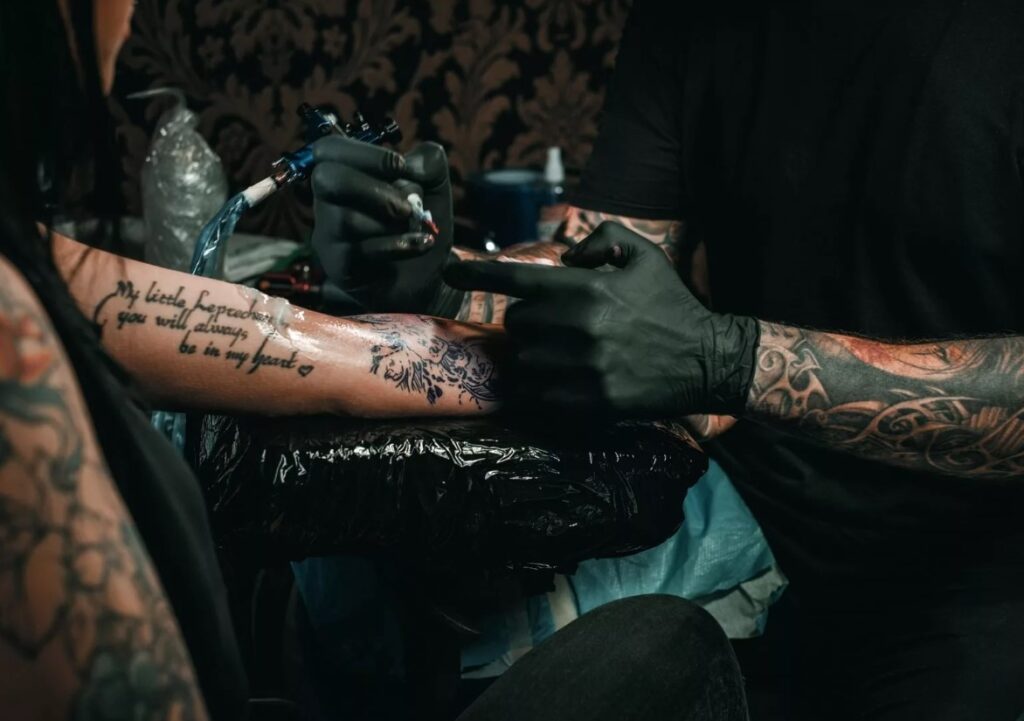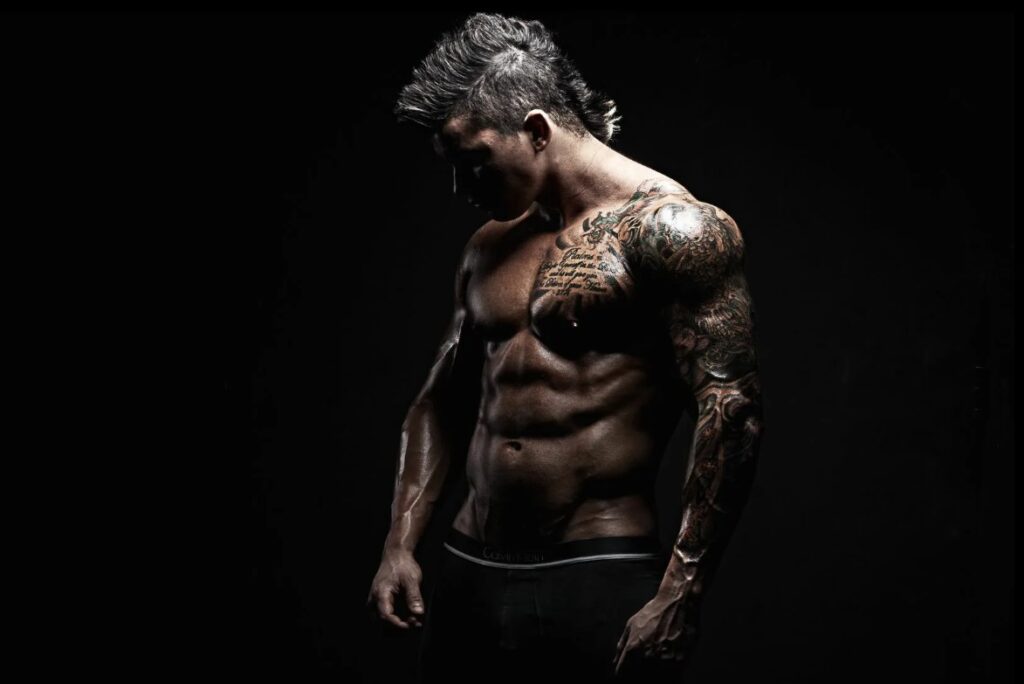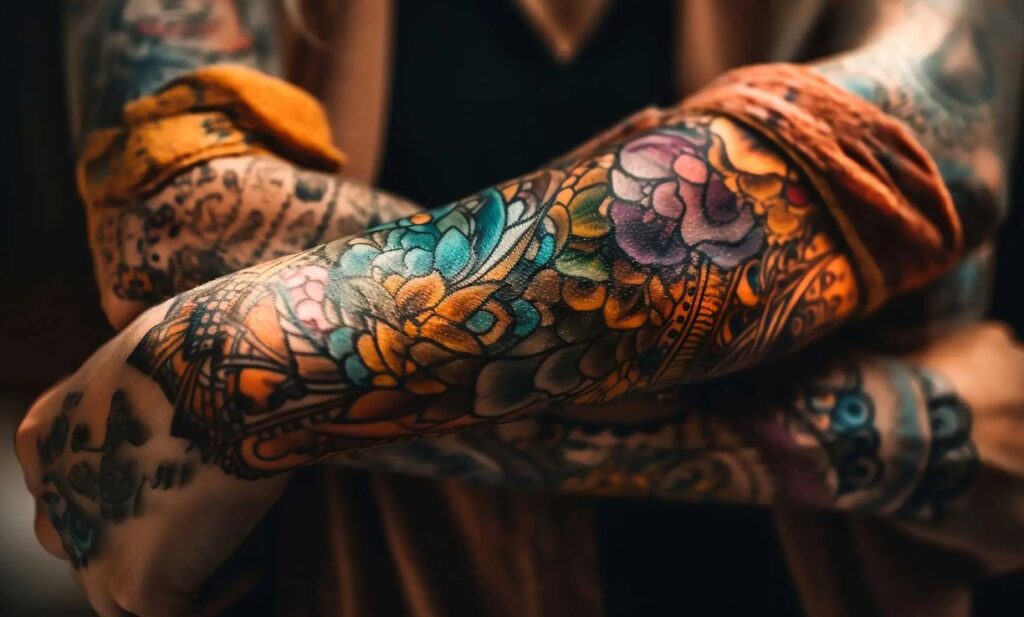The journey of tattoos transcends mere fashion; it is a profound narrative that spans millennia. Tattoos have been a part of human culture since the dawn of civilization, serving various purposes that include art, spirituality, social status, and personal expression. Understanding their evolution provides insight into human identity and societal values across different epochs.
In ancient times, tattoos were integral to countless cultures around the globe. From the mummies of Egypt to the indigenous tribes of North America, body adornments took on meanings that varied greatly between regions and time periods. In some societies, tattoos were symbols of bravery or rites of passage, while in others, they represented religious beliefs or tribal affiliations. This deep-rooted history strongly illustrates how tattoos were more than mere decorations; they were a part of the community’s legacy and individual stories.
As we advanced into the modern era, the perception and purpose of tattoos have undergone significant transformations. What was once associated with rebellion or the marginalized has become a mainstream form of self-expression. Contemporary tattoo culture has embraced an array of techniques and styles, often merging traditional practices with innovative artistry. The shift from taboo to trend signifies a broader acceptance of tattoos in various aspects of life, reflecting an evolving understanding of personal freedom and individuality.

Exploring the Origins of Tattooing Practices
Tattooing is an ancient art form that dates back thousands of years, with its history intertwined with human culture, spirituality, and identity. The origins of tattooing practices can be traced to various civilizations across the globe, each with its unique motivations and techniques.
Ancient Civilizations and Their Tattoo Techniques
The earliest evidence of tattooing dates back to around 3370 BC, discovered on the mummified remains of Ötzi the Iceman, found in the Alps. He featured 61 tattoos made with incisions filled with ash, believed to be a form of pain relief or spiritual significance.
In ancient Egypt, tattoos were prevalent among women, often believed to have protective qualities. Evidence from mummies shows that these tattoos included symbols related to fertility and motherhood. Similarly, in Polynesian cultures, tattoos known as “tatau” carried deep meanings, signifying social status, genealogy, and cultural identity. The intricate designs often covered large areas of the body, reflecting the individual’s life story.
Tattooing Across Cultures
Globally, tattooing practices have developed differently. In some Indigenous cultures of the Americas, tattoos served as rites of passage or symbols of bravery and achievement. In Japan, traditional tattooing, known as “irezumi,” became a form of art involving elaborate designs that narrate historical tales and mythologies, often associated with the Yakuza.
Throughout history, the tools and methods of tattooing have evolved. Early techniques involved the use of sharpened tools made from bones, wood, or thorns, while the introduction of ink made from natural elements such as soot or fruit juices allowed for more permanent designs. The desire for body art has persisted across epochs, culminating in today’s diverse tattooing practices.
| Culture | Tattoo Purpose | Techniques Used |
|---|---|---|
| Egyptians | Fertility and protection | Incision and ash filling |
| Polynesians | Social status and identity | Hand-tapped techniques |
| Native Americans | Rites of passage | Natural pigments with bone tools |
| Japanese | Art and storytelling | Manual needle techniques |
Understanding the origins of tattooing practices reveals the deeper significance of body art throughout history. From marking important life milestones to expressing cultural identity, tattoos have remained a powerful form of self-expression across generations.
Symbolism Behind Ancient Tattoos in Different Cultures
Tattoos have been a fundamental aspect of human culture for thousands of years, serving various symbolic purposes across different societies. The meanings behind these ancient tattoos often reflect the values, beliefs, and social structures of the cultures that created them.
Polynesian Cultures
In Polynesian societies, tattoos were not merely decorative but carried deep spiritual significance. The practice, known as “tatu,” was a rite of passage and a mark of identity.
- Social Status: Tattoos indicated a person’s rank and position within their community. High-ranking individuals often bore intricate designs, while simpler patterns were reserved for lower statuses.
- Spiritual Connections: Many designs were believed to possess protective qualities, connecting the wearer to their ancestors and the spiritual world.
- Personal Journey: Each tattoo represented personal achievements, milestones, and life experiences, telling a unique story of the individual.
Egyptian and Mesopotamian Civilizations
In ancient Egypt and Mesopotamia, tattoos were associated with various religious and cultural meanings.
- Religious Significance: In Egypt, tattoos of deities or sacred symbols were thought to provide divine protection. Women, in particular, often wore tattoos related to fertility and motherhood.
- Criminal Markings: In some Mesopotamian societies, tattoos were used to identify criminals or those who had committed specific offenses, serving as a social warning.
- Healing Practices: Certain symbols were used as part of medical treatments, believed to invoke healing powers and good fortune for the bearer.
Across these ancient cultures, tattoos served as profound markers of identity, spirituality, and societal roles, illustrating the rich tapestry of human expression throughout history. The symbolism behind these markings continues to influence modern tattoo art and culture, bridging the past and present in meaningful ways.
Techniques and Tools Used in Early Tattooing

Early tattooing techniques varied across cultures, utilizing natural materials and tools available at the time. The methods often reflected the beliefs, practices, and resources of each society.
Common techniques included:
- Hand-Poked: This primitive method involved manually inserting ink into the skin using a sharpened tool. The tool could be made from bone, wood, or metal, with the ink being derived from natural sources like ash, soot, or plant-based dyes.
- Stick-and-Poke: A simple and direct technique where a pointed object was used to poke the skin, often accompanied by a pigment. The use of a needle attached to a stick allowed for more control and precision.
- Rubbing or Scratching: Some cultures used tools to scratch the surface of the skin, allowing pigment to enter through the openings. This method typically resulted in a less permanent design.
In addition to techniques, various tools were employed in early tattooing:
- Bone Needles: Many indigenous cultures created needles from bones or thorns, which were then used to puncture the skin.
- Wooden Hand Tools: Some societies utilized small wooden sticks, carved with a sharp end, to insert ink into the skin. These often had a simplistic design, emphasizing functionality.
- Natural Pigments: Tattoos were created using a range of colors derived from minerals, plants, and animal products. These pigments provided a spectrum of hues once applied to the skin.
Overall, early tattooing practices were deeply intertwined with cultural rituals and social significance, making each technique and tool an essential part of a community’s identity.
The Role of Tattoos in Rituals and Religion
Tattoos have played a significant role in various rituals and religious practices throughout history. In many cultures, they serve as symbols of devotion, identity, and social status. From indigenous tribes to ancient civilizations, tattoos often mark important life events and transitions, such as coming of age, marriage, or initiation into a spiritual community.
In religions like Hinduism and Buddhism, tattoos can represent spiritual beliefs and commitments. For instance, in some Hindu traditions, deities are depicted through intricate body art. These tattoos not only serve as a personal expression but also act as a means to connect with the divine. Similarly, in Buddhism, tattoos often feature sacred symbols and mantras, believed to offer protection and enlightenment to the wearer.
Among indigenous peoples, tattoos have deep-rooted meanings tied to cultural heritage and clan identity. For example, the Maori of New Zealand use ta moko, a form of tattooing that represents one’s ancestry and personal achievements. The designs are unique to each individual, signifying their place within the community and honoring their lineage.
Moreover, tattoos can function as rites of passage in certain cultures. In some African tribes, young warriors receive tattoos to signify their bravery and readiness to assume adult responsibilities. This practice not only reinforces community bonds but also conveys individual strength and resilience.
In the modern era, while tattoos continue to serve personal and aesthetic purposes, their ritualistic and religious significance remains alive in various cultures. As society evolves, tattoos still embody a profound connection to identity, spirituality, and tradition, bridging the ancient past with contemporary practices.
How Tattoos were Perceived in Ancient Societies
Tattoos have been a significant aspect of human expression for thousands of years, with their perceptions varying greatly across different ancient societies. In many cultures, tattoos served as symbols of status, identity, and tribal affiliation. They often conveyed important messages about an individual’s life experiences, social standing, and religious beliefs.
In Ancient Egypt
In Ancient Egypt, tattoos were primarily associated with women, particularly among the lower classes. Historical evidence suggests that tattoos were believed to possess protective qualities, with designs inspired by deities and symbols of fertility. The presence of tattoos in burial sites indicates that these markings were intended to accompany individuals in the afterlife, reinforcing their spiritual significance within their society.
In Polynesian Cultures
Conversely, in Polynesian cultures, tattoos were a mark of prestige and were deeply ingrained in social hierarchy. The intricate designs, known as ‘tatau’, represented personal achievements and lineage. These tattoos were integral during rites of passage and organized ceremonies, serving to initiate adulthood and signify bravery. The acceptance of pain during the tattooing process was viewed as an honorable pursuit, reflecting strength and resilience.
Evolution of Tattoo Styles Through the Ages
The history of tattoo styles is a testament to cultural expression and artistic innovation. From the ancient markings of tribal societies to contemporary ink art, the evolution of tattoos reflects societal shifts and changing aesthetics.
Ancient Traditions and Techniques
Tattoos have been employed for various purposes across the globe, particularly in ancient cultures. In Egypt, tattoos were often associated with fertility and protection, featuring intricate designs and symbols. The Māori of New Zealand developed the wānanga, a traditional tattoo style known as tā moko, which included facial tattoos that signified warrior status and tribal affiliation. Techniques varied, with ancient people using natural dyes and rudimentary tools, such as sharpened sticks and bones, for application. These markings were not simply decorative; they carried significant cultural and spiritual meanings.
Modern Influences and Styles
As society evolved, so did tattoo styles. The 20th century heralded a surge in tattoo popularity, particularly in Western cultures. Sailor tattoos became emblematic of maritime adventure, featuring anchors, roses, and nautical stars. The advent of machines revolutionized the process, allowing for more intricate designs and a broader range of colors. The late 20th century saw the rise of diverse styles such as tribal, Japanese, and realism. Each style brought new influences, from the bold black lines of tribal tattoos to the vibrant and detailed work of traditional Japanese irezumi. Today, tattoos encapsulate myriad personal stories, and technological advancements continue to inspire innovative techniques and artistic expressions, making tattoos a dynamic and evolving art form.

The Impact of Colonialism on Tattoo Traditions
Colonialism significantly influenced indigenous tattoo traditions across the globe, altering their meaning, practice, and techniques. As European powers expanded their territories, they encountered diverse cultures with rich tattoo practices that held deep spiritual, social, and cultural significance. However, colonial authorities often viewed these traditions through a lens of superiority, branding them as barbaric or primitive.
Transformation of Meaning and Practice
In many cases, tattoos that once symbolized status, identity, or community connections were stripped of their original meanings. Colonizers imposed their own values, often leading to the suppression of indigenous practices. For instance, in the Pacific Islands, where tattoos played a crucial role in cultural identity, colonial contact led to the decline of traditional methods and motifs. Missionaries and colonizers introduced Western ideologies that viewed tattooing as sinful, resulting in the abandonment or drastic alteration of these practices.
Despite the suppression, some traditions adapted or evolved in response to colonial influences. In some cases, Western techniques merged with indigenous styles, creating new hybrid forms of tattoo art. This fusion was often a survival strategy, allowing communities to retain elements of their identity while navigating colonial pressures.
Revival and Resilience in Modern Times
As the push for decolonization gained momentum, many indigenous groups began to reclaim their tattoo traditions. The modern resurgence of interest in traditional tattoos highlights the resilience of these cultures. Efforts to revive authentic practices have emerged alongside contemporary tattoo trends, fostering a newfound appreciation for historical and cultural significance.
In summary, while colonialism disrupted and transformed tattoo traditions, many cultures have worked to restore their heritage. The journey reflects not only the survival of ancient art forms but also the powerful reclaiming of identities that colonial forces sought to erase.
Revival of Tattoos in the 20th Century
The revival of tattoos in the 20th century marked a significant shift in societal perceptions and cultural significance surrounding body art. Emerging from the shadows of stigma and association with anti-establishment sentiments, tattoos began to re-enter mainstream culture following World War II. Soldiers returning from the war often bore tattoos, symbols of bravery and personal stories, which sparked interest and normalized the practice.
In the 1960s and 1970s, the counterculture movements embraced tattoos as a form of self-expression and rebellion against conventional norms. This era saw tattoos become popular among musicians, artists, and those advocating for individual freedom. Notable figures, such as rock stars and public personalities, adorned themselves with ink, popularizing various styles and motifs.
Throughout the 1980s and 1990s, tattooing underwent further transformation with advancements in technology and technique. The introduction of electric tattoo machines increased efficiency and precision, allowing for more intricate designs. Moreover, the emergence of tattoo conventions created spaces for artists and enthusiasts to connect and share ideas, fostering a sense of community within the tattoo culture.
By the late 20th century, tattoos gained acceptance in various professional environments, challenging previous stereotypes associated with body art. This change reflected broader societal shifts towards individualism, inclusivity, and personal identity. Tattoo studios became legitimate businesses, and a diverse range of tattoo styles, from tribal and traditional to abstract and realism, flourished.
The revival of tattoos in the 20th century not only redefined body art but also laid the groundwork for the explosive growth and popularity of tattoos in contemporary society. As a result, tattoos transformed from fringe symbols to celebrated forms of artistic expression embraced by people from all walks of life.
Modern Tattoo Techniques and Technologies
In the contemporary tattoo landscape, advancements in techniques and technologies have transformed the way tattoos are designed and applied. Modern tattooing encompasses a variety of methods that enhance precision, ink quality, and overall safety for both artists and clients.
Advanced Equipment
Tattoo machines have significantly evolved, transitioning from traditional coil machines to rotary machines that offer greater control and versatility. Rotary machines operate with a smooth, consistent motion, which reduces skin trauma and allows for more intricate designs. Additionally, wireless tattoo machines have emerged, providing artists with increased mobility and freedom during the tattooing process.
Moreover, the introduction of high-quality pigments has improved color saturation and longevity. Vegan-friendly ink options are now widely available, catering to environmentally conscious consumers. These inks are formulated to minimize allergic reactions and fading over time, ensuring that tattoos remain vibrant.
Innovative Techniques
Modern tattoo artists also employ various techniques that create distinctive styles and effects. For instance, the use of dot work and geometric patterns has gained popularity for its visual complexity and contemporary aesthetic. Furthermore, techniques like watercolor and 3D tattoos push creative boundaries, giving the illusion of depth and movement.
Advancements in digital technology have facilitated the design process, allowing artists to use software for precise planning. Digital tattoo machines can even replicate the designs with remarkable accuracy, ensuring that the final result closely matches the initial concept.
Health and safety have also been revolutionized through sterilization practices and the use of single-use materials. Artists now prioritize hygiene with disposable needles and sterilized equipment, reducing the risk of infections and enhancing client trust.
In summary, modern tattoo techniques and technologies have diversified the art form, allowing for greater creativity, safety, and personalization in tattoo experiences.
Current Trends in Tattoo Art and Their Influences
Today, tattoo art is experiencing a renaissance, influenced by various cultural shifts, technological advancements, and changing societal attitudes. Contemporary tattoo enthusiasts seek personal expression and individuality through their body art, leading to a diversification of styles and techniques.
Minimalism and Fine Line Tattoos
One of the most prominent trends in recent years is minimalism, characterized by simple designs, clean lines, and negative space. Fine line tattoos, often featuring delicate details, are favored for their subtlety and elegance. This trend is significantly influenced by the rise of social media platforms, where visuals play a critical role, allowing artists to showcase their minimalist creations. Clients are drawn to fine line tattoos for their understated beauty and the ability to convey deep meaning without overwhelming imagery.
Customization and Personal Narratives
The demand for customization is another driving force in today’s tattoo culture. Many individuals are opting for bespoke designs that reflect their personal narratives or significant life events. This shift away from traditional flash tattoos to unique pieces encourages artists to collaborate closely with clients. The influence of storytelling in tattoos not only enhances the emotional value of the art but also fosters a deeper connection between the wearer and the artwork. As society evolves, the emphasis on personal stories and cultural heritage continues to shape the landscape of contemporary tattoo artistry.
Q&A:
What are some of the earliest known practices of tattooing in history?
The practice of tattooing can be traced back to ancient cultures across the globe. One of the oldest known examples comes from Ötzi the Iceman, a prehistoric mummy discovered in the Alps, who lived around 3300 BC and had several tattoos. Moreover, ancient Egyptians used tattoos for religious purposes, and evidence of tattoos has also been found on mummies, which indicates this practice was significant in their culture. Additionally, in places like ancient Greece and Rome, tattoos were often used to mark slaves or soldiers, highlighting a variety of societal views surrounding tattooing throughout history.
How has the meaning of tattoos changed from ancient times to the present day?
Initially, tattoos were often associated with rites of passage, spiritual beliefs, or a mark of status within a community. For example, in Polynesian cultures, tattooing is a traditional art form that signifies identity and social standing. In contrast, modern times have seen tattoos shift towards personal expression and aesthetic appeal, with many people choosing designs that resonate with their individual stories, values, or artistic preferences. While they can still hold cultural significance, especially in indigenous communities, for many today, tattoos are more about self-expression and fashion than about societal roles or spiritual beliefs.
What role do tattoos play in modern subcultures and trends?
Tattoos have become a prominent feature in various subcultures, often symbolizing rebellion, identity, or membership in a community. For instance, in punk and goth cultures, tattoos can serve as a form of countercultural expression, while among hip-hop artists, tattoos may signify authenticity and personal branding. The rise of social media has further propelled tattoos into mainstream fashion, with many influencers proudly displaying their ink, thus normalizing and popularizing the practice across diverse demographics. This blending of styles and influences has made tattoos an integral part of contemporary culture.
What are some health considerations to be aware of when getting a tattoo?
When getting a tattoo, it’s vital to consider health factors to ensure safety and reduce the risk of complications. First, always select a reputable artist and a hygienic studio to minimize the chance of infection. It’s also important to be aware of any allergies to tattoo ink, particularly colored inks, which can cause reactions in some individuals. Proper aftercare is essential; following the artist’s instructions regarding cleaning and moisturizing the tattoo can help it heal properly. If any unusual symptoms appear post-tattooing, such as excessive redness or pus, one should seek medical advice. Overall, being informed and cautious can contribute to a positive tattoo experience.
If you’re looking for a Trendy Tattoo Artist in Chicago, our studio is ready to provide unique designs and a professional approach to every tattoo.



